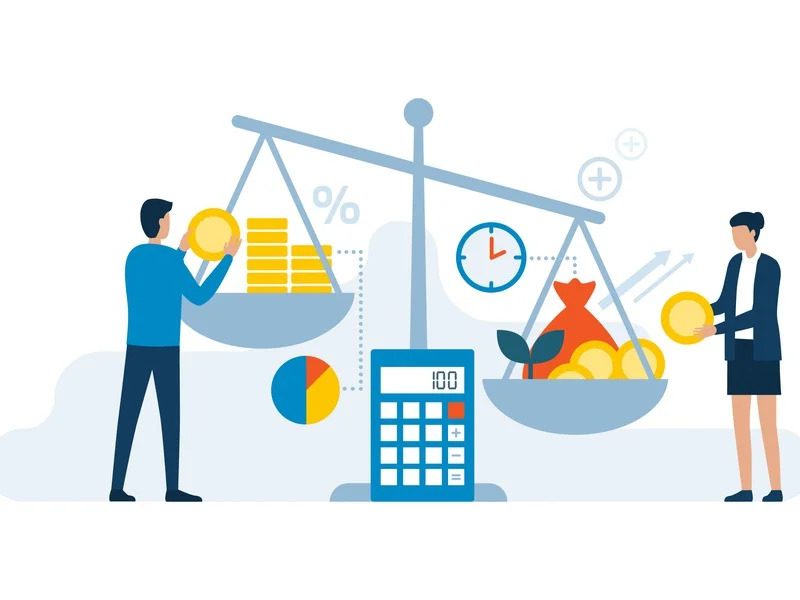What Is the Break-Even Point? How Is It Derived?
March 25, 2023
When Jeep SUVs and Ram trucks calculated their break-even point, it came out to be below 30% of revenue in the region. As a result, they realized they could work profitably even with lower sales.
What does this mean for a firm? A break-even point is an important level for a firm. Ultimately, break-even analysis can help it stay financially stable and successful in the long run. Let’s understand it in detail.
What is the break-even point?
The break-even point is the level of sales at which a firm neither makes a profit nor a loss. In other words, it is when a business earns just enough money from selling products to pay for all the costs of making and selling those products.
Benefits of break-even analysis for businesses
Investors interested in a business want to know how much return they can make from their investment and when they will actually get that return. This is because some companies don’t start making a profit right away. They might even lose money in the beginning before they start making enough to cover their costs.
So, the break-even point is important to include in a business plan for potential investors. It helps them understand when the company will start making enough money to break even and cover its expenses.
For existing businesses, break-even analysis is a fundamental tool for understanding the relationship between the costs they incur and the revenue they generate. Also, it is a crucial aspect of financial management for businesses. Let’s elaborate more on the benefits of break-even analysis for businesses:
- Knowing the break-even point can help businesses make smarter decisions when setting product prices. Pricing involves psychology. But it’s equally important to consider its impact on profitability. The prices should cover all expenses.
- When brainstorming a new business idea, it’s easy to miss certain expenses. A break-even analysis can help a business identify its financial commitments.
- Break-even analysis gives a business a clear understanding of how much it needs to sell to make a profit. This eases setting specific sales targets.
- Break-even analysis reveals when to avoid certain business decisions. This way, it helps mitigate risks and decreases the financial burden of a wrong decision.
Limitations of break-even analysis
However, firms should know that it has some limitations. Specifically, break-even analysis assumes a constant level of sales. But this may not happen in the real world. For instance, external factors can all impact a business’s revenue and affect its break-even point. These factors could be:
- changes in the economy
- shifts in consumer preferences
- actions of competitors
Also, break-even analysis relies on certain assumptions about cost behavior. But this might not happen exactly as expected in the real world.
Factors impacting the break-even point
Here are some points to keep in mind to know what affects your break-even point:
- If your fixed and variable costs are high, the break-even point will be higher too. This means you’ll need more revenue to cover your expenses.
- A higher selling price will lower the break-even point, while a lower selling price will raise it.
- When the level of demand for your product or service is high, you can sell more units and spread the fixed costs over a larger sales volume. This helps you achieve profitability quickly.
- Decreased demand can raise the break-even point because fewer units are sold, resulting in higher costs per unit and a longer time to break even.
- A highly competitive market can affect pricing strategies. So, firms must carefully analyze costs to maintain a viable break-even point in such situations.
How to derive the break-even point?
To figure out the lowest amount of sales a business needs to make to cover costs and make a profit, it’s important to calculate the break-even point. Here is a step-by-step guide on how to calculate the break-even point for a business:
Step 1: Identify fixed costs
Fixed costs are expenses that do not change, regardless of the volume of production or sales. Some examples of fixed costs are:
- rent
- salaries
- insurance
- property taxes
Step 2: Determine variable costs
Variable costs are expenses that vary with the level of production or sales. Some examples of variable costs are:
- raw materials
- labor costs
- shipping fees
Step 3: Calculate the contribution margin
Contribution margin is the amount of money left over from sales revenue after variable costs are subtracted. To calculate the contribution margin, deduct the variable cost per unit from the selling price per unit.
Step 4: Determine the break-even point
After you find the contribution margin, you can find the break-even point. To do this, divide the total fixed costs by the contribution margin. As a result, you’ll get the break-even point. This will tell you the minimum number of products the business needs to sell to cover all of its costs.
Wrapping up
The break-even point is crucial for businesses. It helps them make smart choices, set prices, and establish sales targets for profitability. Also, it is a fundamental tool for financial management and aids potential investors in understanding revenue generation.
But there are some aspects to keep in mind. For instance, sales can’t always be constant in a real-world scenario. This is because external factors can affect a business.
To calculate the break-even point, businesses can identify fixed and variable costs, determine the contribution margin, and divide total fixed costs by it.
If you have questions about the breakeven point for your business and how to interpret the same for your business, you can seek guidance from GJM & Co. Our experienced professionals can assist you.
Should you have any queries or need consultation, Schedule a Call today or write to us at info@gjmco.in.